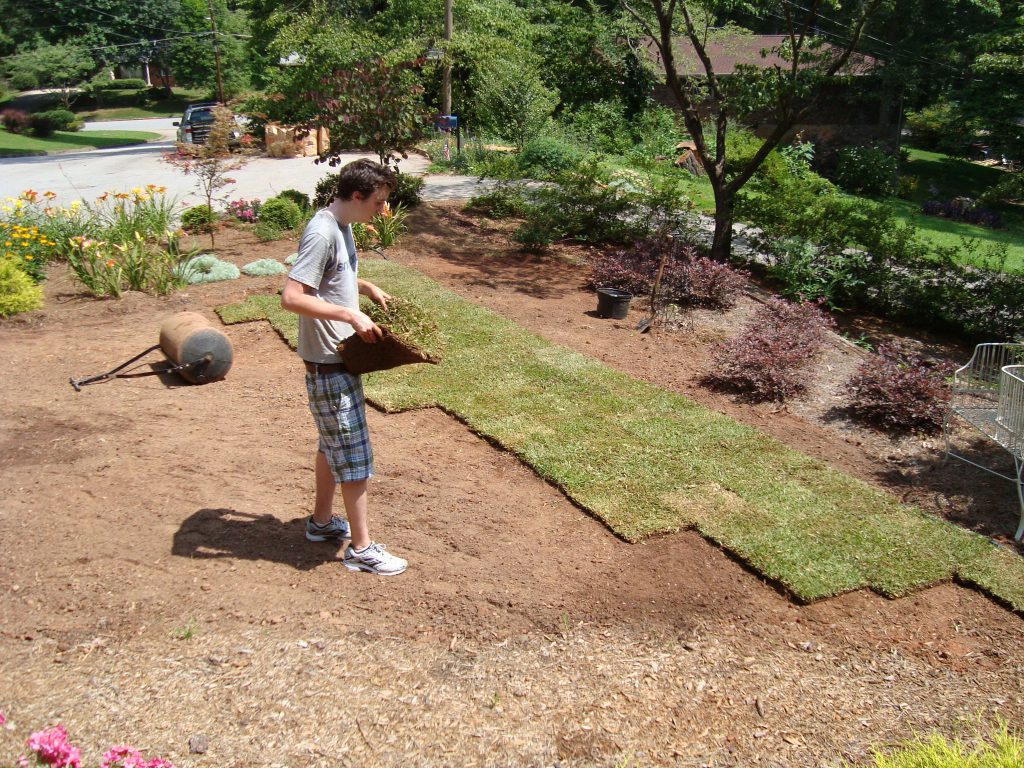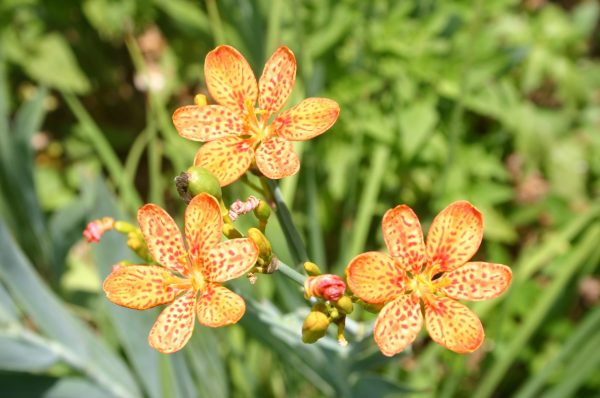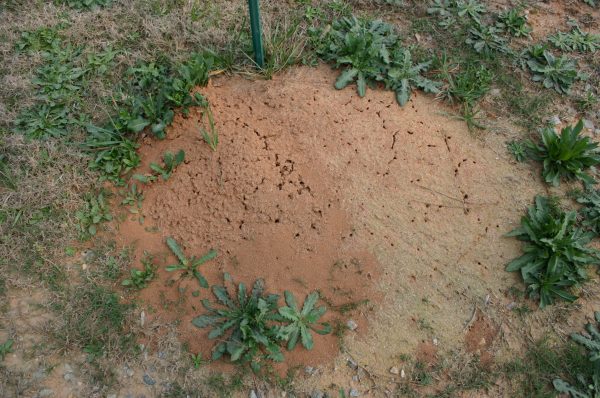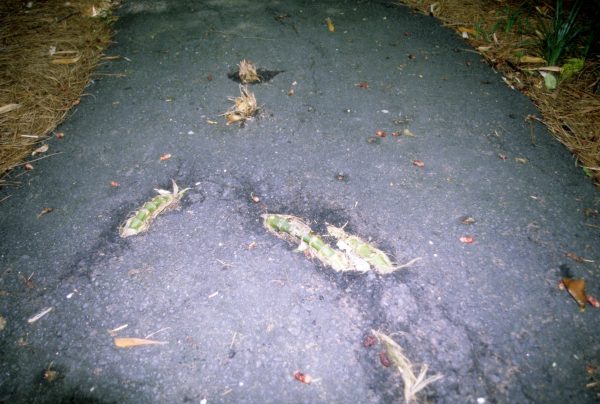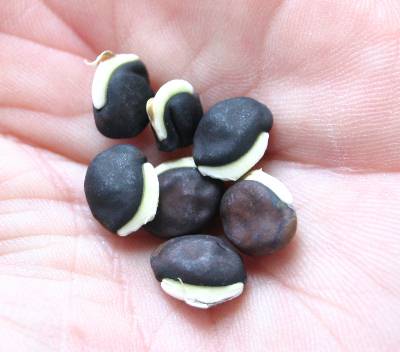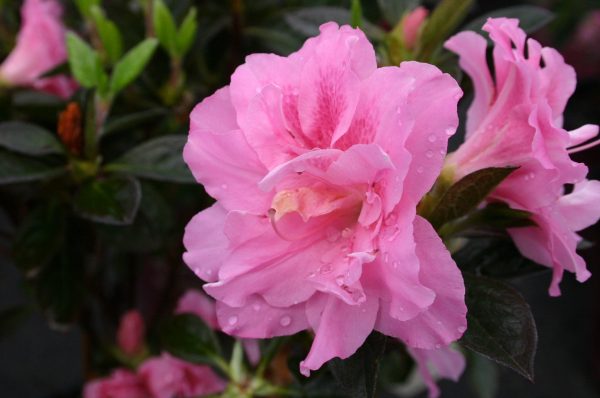Lawn – Leveling
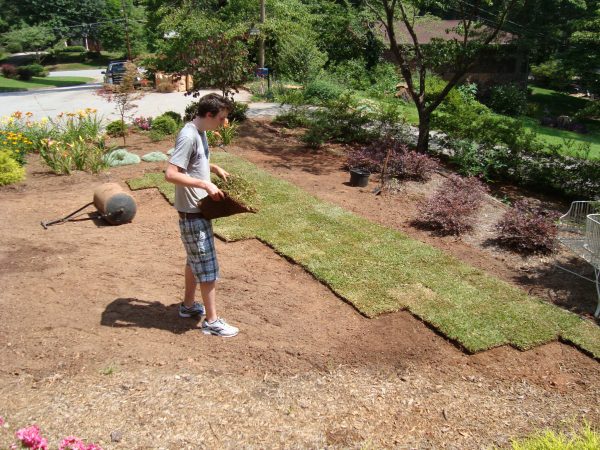
A new home in my neighborhood had bermudagrass sod planted in March. By May, one area was a perfect checkerboard of straight lines, composed of weedy plants, surrounding the individual squares of sod.
Evidently the sod installers were in such a hurry to get it down they failed to butt the pieces tightly together. The result was a one inch wide valley between sod pieces, which provided an excellent home for chickweed and annual bluegrass seed to sprout.
Besides the low strips, the hasty installation also left a couple of big tire ruts in the lawn. Each time the home’s grass is mown, the lawnmower scalps adjoining turf when its wheels drop into the depressions.
Lumps and low spots are common in new lawns but they can occur in established turf too. All it takes is a couple of kids riding bikes across grass made squishy by a heavy rain and long ruts will be evident for months.
Dave J., in Lilburn, recently asked me for advice on leveling his lawn so I have pulled together my best advice.
WHEN The best time is when your grass is vigorously growing. For fescue, do it in fall just before you plant seed. For bermudagrass, zoysiagrass, centipedegrass and St. Augustinegrass, do it in May.
NOT PURE SAND It is easy for a homeowner to level a lawn. The first task, however, is to unlearn what you see at a golf course. There, sand is commonly used to fill divots made by golf clubs. Since the soil beneath has a high percentage of sand, adding sand to the damaged spot doesn’t change the structural characteristics of the soil.
Normal lawns, though, are not built with a soil mix approved by United States Golf Association. We typically have soil that contains lots of clay. If you add pure sand on top of clay the drainage and growth characteristics of the soil are disjointed. Grass growing in the sand is more susceptible to drought and cold injury. Internal soil drainage is worsened.
HALF AND HALF You can easily make your own lawn patching soil by mixing sand and planting soil in a 1:1 proportion in your wheelbarrow. Some of the retail soil companies have gone so far as to package and sell such a mixture specifically labeled for lawn leveling.
MULTI-PERSON JOB Spreading the leveling mix into low areas can be a nice family activity. One person drives the wheelbarrow while the other wields the shovel to scatter dry soil mixture in the low areas. A third can use a broom to sweep the soil off the grass and into place. Only add one-half inch of soil to the low spots at one time, leaving most green grass leaves showing through. Some areas may still be too low but you need to allow the grass grow up through the soil for at least a month.
After leveling, fertilize lightly (except fescue lawns in summer) and water the lawn thoroughly. Four weeks later, another half-inch of dry soil can be swept into the remaining low spots. My feeling is that raising the soil an inch is all that you should attempt in one year.
FILLING HOLES There is a difference between low spots and deeper depressions in a lawn. Where your lawn is more than an inch lower than the surrounding soil it is best to lift what grass remains, fill the depression with the soil mix and lay the grass back in place. Water and fertilize as above.
COMMERCIAL SERVICES Several companies in Atlanta offer lawn leveling service. Some use an application of sand followed by a thorough aeration to mix the sand with the underlying soil. Others use proprietary techniques and mixtures. Before hiring a company to level your lawn, ask for a list of properties they have recently worked on. Visit the properties to see if their situation originally matched your own and determine if the results of leveling meet your expectations.
Don’t let low spots make lawn maintenance harder than it already is. Fill the low spots with a soil mix that matches what you have and bring the summer to a close with a much less lumpy lawn.
